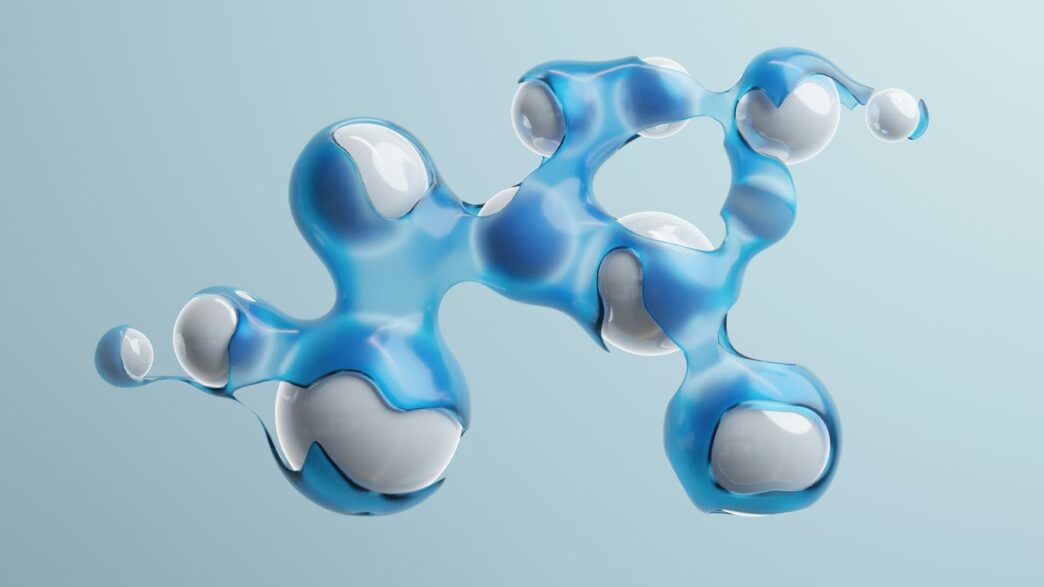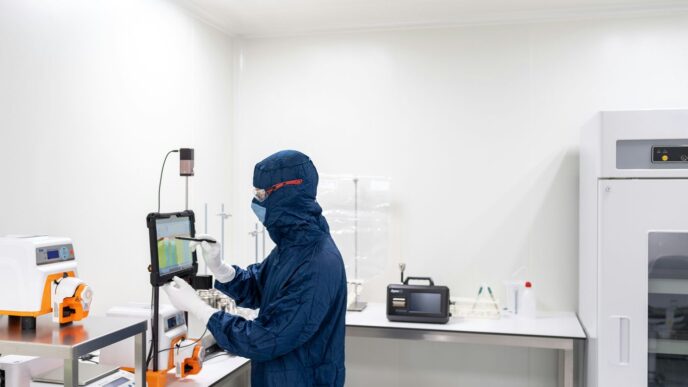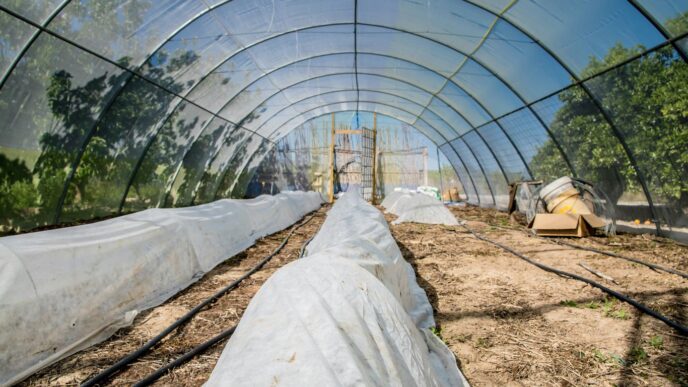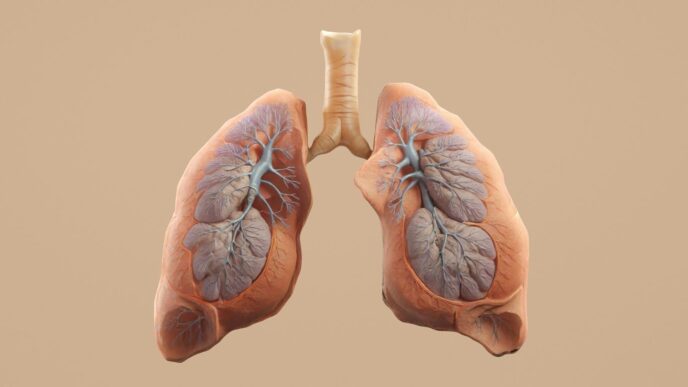Ever wondered why salty snacks make you thirsty or why plants wilt when you forget to water them? It all comes down to something called the osmotic pressure formula. This formula helps explain how water moves in and out of cells, how we clean water using special membranes, and even why food stays fresh longer with salt or sugar. Understanding the osmotic pressure formula isn’t just for scientists—it’s a key part of everyday life, biology, and even some cool tech you might not expect.
Key Takeaways
- Osmotic pressure formula (π = iCRT) shows how solute concentration, temperature, and the type of solute affect water movement in solutions.
- Semipermeable membranes only let certain particles through, which is why osmosis happens in both living things and industrial processes.
- The van’t Hoff factor (i) is important for solutions with electrolytes, since it counts how many particles the solute splits into.
- Osmotic pressure is used in real life: it keeps plant cells firm, helps balance fluids in our bodies, and is behind water purification methods like reverse osmosis.
- Common mistakes include using the wrong units, forgetting to convert temperature to Kelvin, or mixing up osmotic pressure with similar terms like hydrostatic pressure.
Fundamental Concepts Behind Osmotic Pressure Formula

Defining Osmotic Pressure and Its Role in Solutions
Osmotic pressure is the amount of pressure needed to block the natural movement of a solvent—like water—across a semipermeable membrane and into a solution. If you place a concentrated sugar solution on one side of a membrane, and pure water on the other, water will push through until something stops it. This pressure, which keeps water from moving across, is the osmotic pressure. It’s all about the number of particles dissolved in the solution, not their kind. That’s why it’s called a ‘colligative property.’ In daily life, this explains why plant cells swell when watered, or why IV solutions are made to match blood’s concentration.
How Semipermeable Membranes Affect Solvent Movement
Semipermeable membranes let only smaller molecules, like water, pass through, keeping larger stuff (like sugar or salt) where it is.
- Water moves from the side with less solute (fewer particles) to the side with more.
- This movement continues until the concentrations are equal on both sides, or until enough pressure is applied to push water back.
- Practical examples include animal cells with membranes letting water in and out, or in water filtering systems—think of those home reverse osmosis units.
If both sides have exactly the same concentration, the water doesn’t favor one side—this is called ‘isosmotic.’ If there’s less stuff inside the cell than outside, water leaves (the cell shrinks). If there’s more, water moves in (the cell swells).
| Situation | Solute Inside | Solute Outside | Water Movement |
|---|---|---|---|
| Isosmotic (balanced) | Equal | Equal | None |
| Hypoosmotic (cell outside is stronger) | Less | More | Out of cell (shrinks) |
| Hyperosmotic (cell inside is stronger) | More | Less | Into cell (swells) |
Major Factors Influencing Osmotic Pressure
Three main things affect the size of osmotic pressure:
- Concentration of dissolved particles: More particles in the solution, higher the pressure. Whether it’s salt, sugar, or any other stuff, it’s the count, not the type.
- Temperature: Warmer solutions have higher osmotic pressure. That’s because particles move faster with more heat.
- The van’t Hoff factor (i): For compounds that split into ions (like salt), each resulting ion counts as a separate particle. For example, table salt (NaCl) splits into two (Na+ and Cl−), so it effectively doubles the osmotic pressure compared to a sugar molecule that stays whole.
So, if you’re making solutions for biology labs, hospitals, or water treatments, you need to get all of these right to keep things running as they should.
Derivation and Components of the Osmotic Pressure Formula
The Van’t Hoff Equation Explained
The Van’t Hoff equation is what people usually use to calculate osmotic pressure for dilute solutions. This equation borrows a lot from the ideal gas law, which makes sense because both deal with how particles move and interact. The formula looks like this:
π = iCRT
Where:
- π is the osmotic pressure (usually in atm or Pascal)
- i is the van’t Hoff factor, for the number of separated particles each solute unit makes
- C is the molar concentration (in mol/L)
- R is the universal gas constant (0.0821 L·atm/mol·K)
- T is the temperature in Kelvin
What this really means: if you increase the number of particles or raise the temperature, the osmotic pressure gets bigger. This is why even a small change in solute amount can have a huge impact.
Understanding Each Variable in π = iCRT
Here’s what each bit of that equation means, plain and simple:
| Variable | What It Means | Units |
|---|---|---|
| π | Osmotic pressure | atm, Pa, or mmHg |
| i | Number of particles from each formula unit (van’t Hoff factor) | unitless |
| C | Concentration of the solution | mol/L |
| R | Gas constant | 0.0821 L·atm/K·mol |
| T | Absolute temperature | Kelvin (K) |
A few reminders:
- For substances that don’t break up (like glucose), i = 1.
- For table salt, NaCl, it splits into two ions — so i = 2.
- Always use Kelvin for temperature (add 273.15 to Celsius).
Significance of the Van’t Hoff Factor for Electrolytes
The van’t Hoff factor, i, is pretty important if your solute is an electrolyte (something that splits up into ions in solution). Not using the right i value is one of the most common mistakes in this calculation. Here’s why it matters:
- Electrolytes break up into more than one part, boosting the osmotic pressure for the same amount of solid compared to a nonelectrolyte.
- The bigger the i value, the higher the osmotic pressure.
- For things like sugar (glucose), i = 1, because they don’t dissociate.
- For NaCl, i is close to 2. For CaCl₂, i can be up to 3, depending on how well it dissolves.
Quick reference:
- Sugar in water: i = 1
- NaCl (salt): i ≈ 2
- CaCl₂: i ≈ 3
So, if you don’t pick the right van’t Hoff factor, your pressure calculation will be way off. That’s why it’s important to always check what your solute does in water before plugging numbers into the formula.
Correct Methods for Calculating Osmotic Pressure

Calculating osmotic pressure might sound complicated, but with a little practice, it’s straightforward. Here’s exactly how to do it without falling into the common traps. From working through the Van’t Hoff equation to double-checking your units, there are a few things to keep in mind every time.
Step-By-Step Calculations Using Example Solutions
If you’re staring at a problem asking for the osmotic pressure of a solution, don’t panic. Follow these steps to get a reliable answer:
- Write the Van’t Hoff equation: π = iCRT
- List out each value:
- i (Van’t Hoff factor): number of dissolved particles per formula unit.
- C: molarity in mol/L.
- R: gas constant, usually 0.0821 L·atm/K·mol.
- T: temperature in Kelvin (add 273.15 to Celsius).
- Plug in the numbers and calculate.
Let’s tackle a quick example with a 1.0 M glucose solution at 27°C (300 K):
| Variable | Value |
|---|---|
| i | 1 (glucose) |
| C | 1.0 mol/L |
| R | 0.0821 L·atm/K·mol |
| T | 300 K |
Calculation:
π = 1 × 1.0 × 0.0821 × 300 = 24.63 atm.
So, the osmotic pressure is 24.63 atm.
Common Mistakes and How to Avoid Them
It’s easy to make errors with units and variables, so here’s what to watch for:
- Mixing up temperature units: Always convert Celsius to Kelvin.
- Forgetting to use the correct Van’t Hoff factor (i), especially for electrolytes that break apart in solution.
- Using the wrong gas constant (R): Make sure the units match your pressure answer.
- Confusing osmotic pressure with other types, like hydrostatic pressure.
A quick checklist before submitting your answer:
- Is temperature in Kelvin?
- Did you use the correct i value?
- Are your units consistent?
Measuring and Interpreting Units in Practice
You can see units all over the place in textbooks or problems—atm, mmHg, Pa. For calculations:
- Use R = 0.0821 L·atm/K·mol for answers in atmospheres (atm).
- To convert atm to mmHg, multiply by 760.
- If you need pressure in Pascals (Pa), use R = 8.314 L·kPa/K·mol or convert atm to Pa (1 atm = 101325 Pa).
| To Convert From | To This Unit | Multiply By |
|---|---|---|
| atm | mmHg | 760 |
| atm | Pa | 101325 |
| mmHg | atm | 0.001316 |
If you’re in a lab or classroom, the measured pressure difference across a membrane (usually using a U-tube) directly gives the osmotic pressure—no guessing there. The key is double-checking everything before calling it final. Trust me, a quick look over the units and variables goes a long way.
Osmotic Pressure Formula in Biological Systems
Osmotic pressure isn’t just something from chemistry class. It shows up all over biology, whether you’re thinking about a houseplant or the stability of animal cells.
Water Balance and Turgor Pressure in Plants
Plants rely on osmotic pressure to bring water into roots and help them stand tall. When root cells have lower solute concentration than the soil, water moves in. If the soil is salty, though, water might actually leave the plant, making it droop.
Here’s a quick look at what happens in different soil conditions:
| Soil Condition | Water Movement | Result on Plant |
|---|---|---|
| Pure (fresh) | Into roots | Plant is firm, healthy |
| Slightly salty | Less into roots | May wilt slightly |
| Very salty | Out of roots | Plant likely to wilt |
Turgor pressure—the force exerted by water pressing against cell walls—keeps non-woody plants upright. Basically, as water moves in, the cell swells, pushing against the walls, giving the leaf its shape. When there’s less water, the pressure drops and plants lose their crispness. Roots in salty soil sometimes react by making more solutes inside their cells; that way, they can keep pulling in water even in tough environments.
Osmosis and Cell Stability in Animal Physiology
Animal cells don’t have the tough outer wall that plants do. So, osmotic pressure affects them a bit differently. If you put an animal cell in pure water (hypotonic solution), water rushes in and the cell can burst. In a hypertonic solution (salty outside), water leaves, and the cell shrinks up.
Cells have to work to keep things balanced. They use:
- Ion pumps (like the sodium-potassium pump) to control concentrations of ions
- Water channels called aquaporins
- "Osmolytes," small molecules they make to hug onto water
Osmoregulation is the whole process of keeping things balanced so cells don’t swell or shrivel.
Oncotic Pressure and Fluid Exchange in Capillaries
Inside our bodies, osmotic pressure also controls fluid exchange in capillaries. Blood is full of plasma proteins (mostly albumin) that can’t slip through capillary walls. These proteins pull water back into the blood by generating what’s called oncotic pressure.
If you ever wondered why fluid sometimes builds up in the tissues (edema), it’s often because the balance between blood pressure (which pushes fluid out) and oncotic pressure (which pulls it in) is off. Here’s what affects that in the body:
- Too few plasma proteins → less pulling power → fluid stays in tissues
- High solute concentration in blood → more water drawn into capillaries
- Damaged capillary walls → proteins flow out, pulling water with them
Osmotic pressure formulas help health pros figure out what’s happening at the tiniest blood vessels, where nutrients and wastes are traded between blood and tissues.
Osmotic pressure is a basic concept, but it underpins almost every fluid movement you see in biology. From a plant leaf to mammalian blood vessels, it’s a steady force keeping everything in order.
Colligative Properties Related to Osmotic Pressure
Osmotic pressure is more than just a chemistry formula — it’s one of the main colligative properties, which all depend simply on how many particles are dissolved, not on what they are. That’s why both chemistry and biology folks spend so much time on these topics in class. Let’s get into how osmotic pressure fits with the other colligative properties and why it matters in the real world.
Comparing Osmotic Pressure to Hydrostatic Pressure
Osmotic pressure and hydrostatic pressure might sound similar, but they’re not the same thing. Osmotic pressure is the force that keeps solvent moving across a semipermeable membrane from low to high solute concentration. Hydrostatic pressure is physical pressure caused by the weight of liquid itself, like water pressing down at the bottom of a tank. In cells, these two compete: if a red blood cell is dropped into pure water, osmosis causes water to flood in and hydrostatic pressure builds up inside until the cell pops.
List of key differences:
- Osmotic pressure involves the movement of solvent due to differences in concentration.
- Hydrostatic pressure results from the gravitational force of a liquid column.
- In living things, the balance between these two pressures is what keeps the cell from bursting or collapsing.
A surprising fact: in microchip technology, pressure differences can also push boundaries. Light can achieve unlimited phase velocities in zero-index materials, which sounds just as wild as it is.
Relationship to Boiling Point Elevation and Freezing Point Depression
Osmotic pressure’s close relatives are the changes in boiling and freezing points of solvents. If you add salt to water, you not only increase its osmotic pressure but also raise the boiling point and lower the freezing point. Here’s how they resemble each other:
| Colligative Property | What Changes? | Cause |
|---|---|---|
| Osmotic Pressure | Pressure needed to stop osmosis | Number of dissolved particles |
| Boiling Point Elevation | Boiling temperature increases | Number of dissolved particles |
| Freezing Point Depression | Freezing temperature decreases | Number of dissolved particles |
Key points:
- All depend on the number of dissolved particles — not the identity.
- That’s why sugar, salt, or even tiny proteins all impact boiling, freezing, and osmosis the same way if particle numbers match.
- This is why intravenous solutions are carefully balanced: wrong concentrations can harm cells due to these very effects.
Role of Solute Concentration and Molecular Size
Solute concentration is the star of the show in colligative properties. The more particles you have, the greater the effect:
- For the same mass, smaller molecules like urea create greater osmotic pressure because more molecules dissolve.
- Larger molecules (like proteins) can’t cross most membranes and create what’s called oncotic or colloid osmotic pressure in blood plasma.
- If a solute breaks into multiple ions (like NaCl → Na+ + Cl−), the actual number of particles is counted, not the formula units. This is captured by the van’t Hoff factor in the formula.
In practice:
- Double the concentration, double the osmotic pressure.
- If a solute doesn’t dissolve completely, the effect is less because fewer particles form.
- This core principle ties together osmosis, boiling, freezing, and more; it all comes back to how many particles are floating around, plain and simple.
Osmotic pressure really is just one piece in a bigger colligative property puzzle, but it’s a piece you’ll see showing up in everything from kitchen salt shakers to plant cells.
Industrial and Environmental Applications of Osmotic Pressure Formula
The osmotic pressure formula isn’t just something you memorize for a chemistry test. It powers vital tech and explains processes you’ll find in factories, tap water, the grocery aisle, and even some renewable energy projects. Let’s break down the most interesting real-world uses and how osmotic pressure fits right in.
Reverse Osmosis in Water Treatment
Reverse osmosis (RO) is everywhere these days, from fancy water bottles to massive desalination plants. Here’s how it works:
- Water with lots of dissolved stuff (like seawater) is pressed through a semipermeable membrane using pressure higher than the solution’s natural osmotic pressure.
- The clean water passes through the membrane, leaving salts and other junk behind.
- It’s often used where pure water is needed—think drinking water, labs, or making pharmaceuticals.
Here’s a table showing typical osmotic pressures involved in this process:
| Source | Approximate Osmotic Pressure (atm) |
|---|---|
| Seawater | 25 – 30 |
| Brackish Water | 5 – 15 |
| Freshwater | < 1 |
Food Preservation Techniques Using Osmosis
Ever wondered why pickles and jams seem to last forever? Turns out, osmotic pressure has your back:
- Adding lots of salt or sugar raises the osmotic pressure around microbes.
- Water rushes out of bacterial cells by osmosis, basically drying them out.
- Microbes can’t survive in this environment, so your food stays fresh.
Some common food preservation methods using this principle include:
- Salting fish or meats
- Making sweet fruit preserves
- Brining vegetables (like cucumbers for pickles)
Forward Osmosis for Renewable Energy Generation
This method’s a little more high-tech, but it’s gaining steam:
- Forward osmosis uses osmotic pressure differences to naturally move water across a membrane, without the need for lots of external energy.
- One application is pressure-retarded osmosis, where mixing freshwater and seawater (separated by a membrane) builds up enough pressure to spin a turbine.
- Some portable hydration packs for emergencies also use forward osmosis.
Real-world benefits:
- Less energy needed compared to traditional filtration or desalination
- Potential for clean energy production where freshwater and saltwater mix, like river mouths
This all circles back to the basic osmotic pressure formula you see in textbooks—iCRT, but in the wild, it means cleaner water, longer-lasting foods, and maybe even new sources of energy.
Conclusion
So, that’s osmotic pressure in a nutshell. It’s one of those things you might not think about much, but it pops up everywhere—from how plants stay upright to why doctors are so picky about IV fluids. The formula itself is pretty simple once you get the hang of it, but remembering to use the right units and pay attention to things like temperature and the van’t Hoff factor can save you a lot of headaches. Whether you’re measuring it in a lab or just trying to understand why salty snacks make you thirsty, osmotic pressure connects a lot of dots between chemistry, biology, and even everyday life. Next time you see a wilted plant or wonder how water filters work, you’ll know there’s a bit of osmotic pressure at play behind the scenes.














